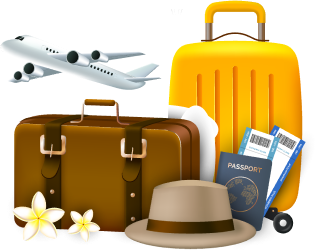Call Anytime
Namibia Destinations



We have more than
10 years of experience
AFRICAN DESTINATIONS
Namibia Destinations
Namibia, a captivating destination in southwestern Africa, beckons with its surreal landscapes and diverse attractions. The iconic Namib Desert is home to the otherworldly dunes of Sossusvlei, where towering orange sands create a mesmerizing panorama. Etosha National Park, a wildlife haven, allows visitors to witness an abundance of animals congregating around waterholes. The coastal town of Swakopmund seamlessly blends German colonial architecture with adrenaline-pumping activities, offering a unique cultural experience. Twyfelfontein, a UNESCO World Heritage Site, boasts ancient rock engravings depicting the region's rich cultural history. Namibia's Skeleton Coast, known for its shipwrecks and desolate beauty, adds an element of mystery to the landscape. With its vast open spaces and star-studded skies, Namibia Destinations promises a journey of unparalleled natural beauty and cultural discovery.
We hope our Namibia travel guide has inspired you to include this incredible destination in your African adventure.
For more information about any of our Namibia Safari Tours, please feel free to contact Africa Uncovered Safaris.
Wayfarers' Hub
Wander Wisely - A Traveler's
Guide To Uncharted Safari Journeys

Best Time To Visit
Choosing the Best Time to Visit Namibia depends on the experiences you seek. The dry winter months (May to October) are ideal for wildlife viewing, while the wetter summer months (November to April) bring vibrant landscapes and birdlife.

Best Activities To Do
- Sossusvlei and Deadvlei: Marvel at the towering red dunes and the stark white clay pan, creating a surreal and iconic landscape.
- Etosha National Park: Explore on thrilling game drives to witness the abundance of wildlife, including elephants, lions, and rhinos.
- Fish River Canyon: Hike along the second-largest canyon in the world, offering breathtaking views and challenging trails.
- Swakopmund: Experience the coastal charm, adventure activities, and the blend of German colonial architecture in this seaside town.

Packing List
- Neutral-Colored Clothing: Lightweight, neutral-colored clothing is advisable for both the desert heat and cool evenings.
- Sun Protection: Bring sunscreen, a wide-brimmed hat, and sunglasses to shield yourself from the intense Namibian sun.
- Sturdy Footwear: Comfortable, sturdy shoes are essential, especially for desert hikes and exploring rocky terrains.
- Binoculars: Enhance your wildlife viewing experience by packing binoculars for distant sightings.
- Camera and Gear: Capture the unique landscapes with a camera and accessories, ensuring you preserve the memories of your Namibian adventure.

Flight
Namibia is accessible through its capital, Windhoek, with Hosea Kutako International Airport serving as the primary gateway. Major airlines offer international flights, connecting Namibia to destinations worldwide. Domestic flights and road transfers are commonly used for reaching different regions within the country.

Visa
Most visitors to Namibia do not require a visa for short stays, but it's essential to check the specific visa requirements based on your nationality. A valid passport and proof of accommodation are typically required for entry.
Finally, Namibia invites travellers to explore on a journey through its diverse landscapes and cultural tapestry. From the mesmerising dunes to the wildlife-rich plains, Namibia Safari promises an adventure that resonates with those seeking the extraordinary in both nature and culture.

Currency
The currency of Namibia is The Namibian Dollar (NAD; symbol N$) is in note denominations of N$200, 100, 50, 20 and 10. Coins are in denominations of N$5, N$1, 50 cents, 10 cents and 5 cents. It is linked to the South African Rand (R) on a 1:1 basis (South African Rand = 100 cents). The South African Rand is also acceptable as currency in Namibia.
The import and export of local currency is limited to N$50,000. The import of foreign currency is unlimited, provided sums equal to or exceeding NAD5,000 are declared on arrival. Export of foreign currency is unlimited up to the amount imported and declared.
Banking
Banking hours: Monday - Friday 09h00 to 15h30 and Saturday, 08h30 to 11h00
Banks are found in most towns, with most being closed on Sundays and public holidays. Most of them offer foreign exchange services - with cash, bank and credit cards as well as travelers cheques.
American Express, Diners Club, Mastercard and Visa are accepted. Credit cards are not usually accepted at petrol stations, so bear this in mind when you visit the ATM. Setting aside an emergency petrol cash fund is a good idea if you’re planning to drive.
You can also obtain cash from many of the ATMs. Several international banks have branches in main city centres. Always advise your bank that you are travelling outside of the country as they might block your purchases if they have not been informed.
To avoid additional exchange rate charges, take traveler's cheques in US Dollars or South African Rand. In general, you can expect a better exchange rate for traveler’s cheques than for cash.

Food, Drink and Cuisine Advice
Traditional Namibian cuisine is rarely served and so the food at restaurants tends to be European in style and is, generally, of a very high standard.
Namibia is very meat-orientated, and many menu options will feature steaks from various animals. However, there is usually a vegetarian and seafood section offered by most camps and restaurants.
In the supermarkets you'll find pre-wrapped fresh fruit and vegetables (though the more remote the areas you visit, the smaller your choice), and plenty of canned foods, pasta, rice, bread, etc. Most of this is imported from South Africa.
The water in Namibia's main towns is generally safe to drink, though it may taste a little metallic if it has been piped for miles. Natural sources should usually be purified, though water from underground springs and dry riverbeds seldom causes any problems. However, filtered and bottled water are readily available in most towns and all camps, lodges and hotels.
Tailor-Made Packages
Safari Experiences Tailored to Perfection
Crafted with precision and personalized attention, our packages ensure a safari experience that resonates with individual travel aspirations.



Testimonial
What Our Customers are
Saying?










